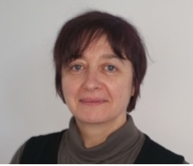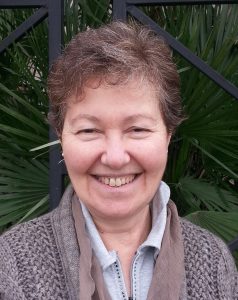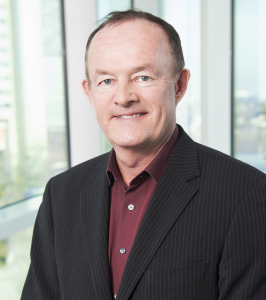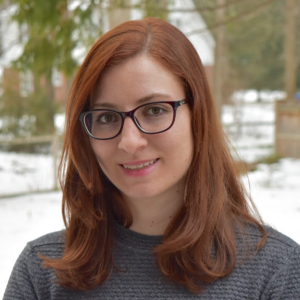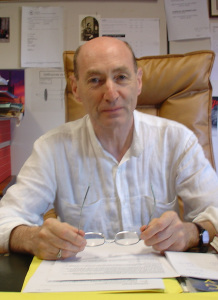 |
Ferdinando Bersani Prof. Ferdinando Bersani got his degree in Physics at the University of Bologna in 1967. From 1968 to 1974 specialized in Microbiology and worked at the Institute of Microbiology and Virology, University of Bologna. He is currently retired professor of Physics at the Medical Faculty of the University of Bologna. He carried out his scientific research in Biophysics and Medical Physics at the Department of Physics of the same University. His present research is mainly focused on the Biological Effects of Electromagnetic Fields. He is one of leading researchers in this field in Italy, and his work is largely recognized worldwide. He published about one hundred of research papers and more than sixty in Bioelectromagnetics, on peer-review journals, with special attention to the cellular effects of ELF and RF fields, and to their possible relevance concerning the health risk on one side and the biomedical applications on the other side. Moreover, since 1996 he is also working on theoretical-biophysical models of biological systems with particular respect to the immune system and nervous system. He was vice-president and currently honorary member of the European Bioelectromagnetics Association (EBEA) and member of the American Bioelectromagnetic Society (BEMS). He was Associated Editor of the Bioelectromagnetics Journal and currently belongs to its Editorial Board. He is also the co-director of the International School of Biolectromagnetism “A. Chiabrera” at the Foundation and Centre for Scientific Culture E. Majorana(Erice,Sicily).
|
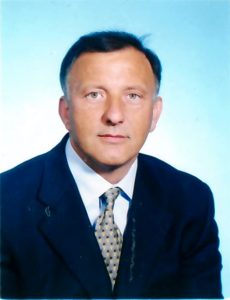 |
Ruggero Cadossi 1969: Bachelor of Science; 1975: Degree in Medicine and Surgery; University of Modena, Modena, Italy. 1975/1976: Graduate assigned to students’ practical applications, with the Institute of Special Medical Pathology and Clinical methodology, University of Modena. 1976/1978: Assistant Professor with the Institute of Biological Chemistry at the University of Modena. 1977: Scholarship granted by the Italian League against Tumours. 1978: Specialist in Blood Diseases. 1978: Scholarship granted by the National Council of Research. 1981: Assistant Professor of Internal Medicine, University of Modena. 1984: Specialist in Physical Therapy. 1986: 6 sabbatical months in Stanford University – School of Medicine and Invited speaker at the Gordon Research Conference on Bioelectrochemistry. 1998: Director Laboratory of Clinical Biophysics IGEA. From 1986 Assistant Editor of the journal: Electro and Magnetobiology. From 1994: Council Member of Society for Physical Regulation in Biology and Medicine. From 1995: Member of the Editorial Board of the journal : Biolectromagnetics. Fellow of: American Association for the Advancement of Science; New York Academy of Science; Charter Member of the Bioelectromagnetics Society; Italian Society of Haematology; International Association for the Study of Pain; Italian Association for the Study of Pain; Bioelectrical Repair and Growth Society; Bioelectrical Society; Nominated for secretary treasurer elect of BRAGS. Project leader in 3 European research projects and in 1 European Coordination Action
|
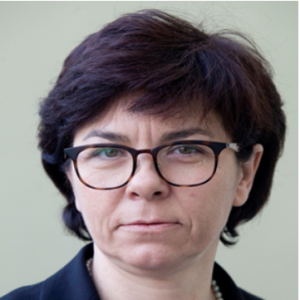 |
Maja Cemazar Maja Cemazar obtained her PhD in basic medical sciences from the University of Ljubljana, Faculty of Medicine in 1998. She was a post-doctoral fellow and a researcher at the Gray Cancer Institute from 1999-2001. In 2004 she was working at the Institute of Pharmacology and Structural Biology as an associate researcher. Currently, she works at the Department of Experimental Oncology, Institute of Oncology Ljubljana and at the Faculty of Health Sciences at the University of Primorska. She is a lecturer in under and post-graduate courses of Cell and Tumor biology. Her main research interest is in the field of gene electrotransfer of therapeutic genes. She is developing different treatment approaches by utilizing therapeutic genes targeting either tumor angiogenesis or stimulating immune response. She is a member of different national and international societies and a member of the National Ethical Committee for animal experimentation at the Ministry of the Environment and Spatial Planning and a member of National scientific committee for deliberate release of the GMO Ministry of the Environment and Spatial Planning. In addition, she serves as a member of Editorial board of several international peer-reviewed journals and is an associate editor of Technology in Cancer Research and treatment and a Deputy Editor of the journal Radiology and Oncology. In 2006 she received the Award of the Republic of Slovenia for important achievements in the scientific research and development in the field of experimental oncology. She was a supervisor of 10 PhD students, and more than 20 BSc theses. She is the author of more than 200 articles in peer-reviewed journals. |
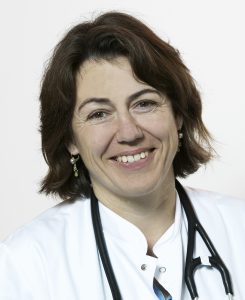 |
Julie Gehl Julie Gehl is a Professor of Clinical Oncology at the University of Copenhagen and Chief Physician at Zealand University Hospital. Prof. Gehl is a pioneer within electroporation based treatments, and has published extensively, both preclinical and clinical research over the past 20 years. The work encompasses how electric pulses may be utilized to permeabilize cells in tumors, dramatically enhancing efficacy of the chemotherapeutic agent bleomycin, how electroporation may be used in gene delivery, and how electroporation in the presence of calcium may be used both as a local tumor treatment and potentially have an abscopal effect as well. Professor Gehl has extensive experience in clinical protocols and treatments across tumor histologies. |
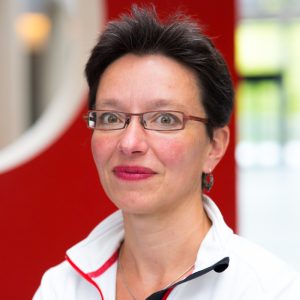 |
Anke Huss Dr Anke Huss is an assistant professor at the Institute for Risk Assessment Sciences (IRAS, www.iras.uu.nl) at Utrecht University. Her research focuses on environmental and occupational exposure assessment to electromagnetic fields and their health effects. She has experience including static, extremely-low-frequency and radiofrequency electromagnetic fields. In particular, she is involved in several case-control and cohort studies evaluating neurodevelopment and sleep in children in the ABCD cohort (Amsterdam Born Children and their Development) and GERoNiMO project, cancer and neurodegenerative diseases such as Parkinson’s disease, Alzheimer’s or ALS in the NOCCA (Nordic Occupational Cancer Study) and SNC (Swiss National Cohort) studies and on electromagnetic hypersensitivity. She is a member of the Dutch Health council, and the Scientific Council for Electromagnetic fields of the Swedish Radiation Safety Authority (SSM). |
|
|
Isabelle Lagroye Isabelle Lagroye, PharmD and PhD in Life Science, graduated from the Bordeaux University, France, in 1997.After a post-doctoral position at the Radiation Oncology Center in Dr Roti-Roti’s laboratory (Saint-Louis, MO, USA), she has done research work at the Bioelectronics group of the IMS laboratory, Bordeaux University since 1999. She is a professor at the Ecole Pratique des Hautes Etudes, France. Her research deals with the toxicological effects of non-invasive electromagnetic fields, investigating genotoxicity, apoptosis, protein expression, and stress markers in rodents and cell cultures. She is author of fifty-four peer-reviewed papers, twenty-nine invited conferences and about sixty conferences. She was an expert for ICNIRP (2003 ICNIRP ELF blue book), member of the ICNIRP subcommittee on biology (2008-2012), and of task group “gap in knowledge in the ELF frequency range”. She also contributed to WHO Environmental Health Criteria Task Groups (2004, 2005) and the 2010 WHO RF research agenda. I. Lagroye is currently Past-president of the European BioElectromagnetics Association (EBEA). She has been a reviewer for major journals in the field of bioelectromagnetics since 1997 (Bioelectromagnetics, International Journal of Radiation Biology, Radiation Research, Physical Biology) and associate editor for the Bioelectromagnetics journal (2013-2015).
|
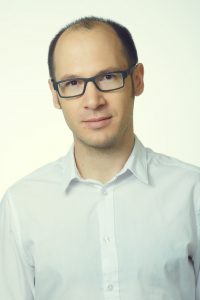 |
Bor Kos Bor Kos was born in Ljubljana, Slovenia, in 1983. He received a Doctoral degree in Electrical Engineering from University of Ljubljana in 2013. He is currently Assistant Professor at the Faculty of Electrical Engineering, University of Ljubljana. Research field of assist. Prof. Bor Kos is bioelectromagnetics and biomedical engineering with main focus being on numerical modelling of electroporation. Since the first treatment of deep-seated tumours with electrochemotherapy has been performed at the Institute of Oncology of Ljubljana, Bor Kos has been constantly engaged in the development, validation and advancement of numerical treatment planning for electroporation-based treatments. For his contributions to the field, he received the 2018 Alessandro Chiabrera award, presented by EBEA. He is involved in international research collaborations and publications with colleagues from Denmark, Hungary, France, Germany, Italy, Israel, Poland, Spain, United Kingdom and the USA.
|
|
|
Rita Massa Rita Massa received the Physics degree (summa cum laude) and Ph.D. degree in electronic and computer science from the University of Naples Federico II, Naples, Italy. In 1992, she became a Researcher, and in 2001, a Professor of Electromagnetic Fields of the University of Naples Federico II, with the Department of Electronic and Telecommunication Engineering (DIET), and, actually, the Department of Physics (DP). She has been the chief of the Microwave Interaction Division (MIND) Laboratory (DIET), responsible for the Biophysics Laboratory (DP) and actually she is the chief of Non Ionizing Radiation Laboratory (DP). She is currently the Director of the “Interuniversity Center for the Study of Interactions between Electromagnetic Fields and Biosystems (ICEmB)”. Her research interests are is in the framework of the interactions of electromagnetic fields and materials, dealing with the biological effects of Electromagnetic Fields, electromagnetic dosimetry/exposure assessment, therapeutic and industrial applications of Electromagnetic Fields, and nondestructive testing of materials. She was and is currently involved in research projects, in cooperation with small, medium and/or great enterprises, for which she played and is currently playing the role of scientific coordinator/WP Leader. She has coauthored more than 200 papers published in peer-reviewed journals, proceedings, and conference papers.
|
|
|
Mats Olof Mattsson Prof. Dr. Mats-Olof Mattsson is an innovative, entrepreneurial and analytical senior life scientist and administrator with over 30 years of post-doctoral international experience that includes playing key roles in academia, research institutes, and for the European Commission. He is skilled at strategic and operational academic leadership, teaching, overseeing major global research projects, and conducting risk assessments and scientific evaluations. His current positions are as CEO at SciProof International AB, Sweden, an international leader in research and consulting on health aspects of emerging technologies, and as Professor in Cell Biology at Institute for Advanced Studies, Strömstad Academy. His current research in bioelectromagnetics focuses on diagnostic and therapeutic use of ELF magnetic fields and millimeter and THz waves. |
|
|
Emily Porter Dr. Emily Porter is an EU Marie-Curie ASSISTID Fellow and Adjunct Lecturer at the National University of Ireland Galway. She received her B.Eng., M.Eng., and Ph.D. degrees in electrical engineering from McGill University, Montreal, Canada, in 2009, 2010, and 2015 respectively. Since 2015, she has been with the Translational Medical Device Laboratory at the National University of Ireland Galway. Her current research interests include the measurement of dielectric properties of biological tissues and the development novel technologies for therapeutic and diagnostic applications of electromagnetic waves. Dr. Porter is the recipient of several prestigious national and international awards, including the URSI Young Scientist Award, the IEEE Antennas and Propagation Society Doctoral Research Award, the Irish Research Council (IRC) “New Foundations” Grant, and the Royal Irish Academy (RIA) Charlemont Grant.
|
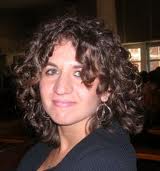 |
Stefania Romeo Stefania Romeo, born in 1985, received the Master degree (summa cum laude) in Biomedical Engineering from the University of Naples Federico II (Naples, Italy), and the Ph.D. in electronic engineering from the Second University of Naples (Aversa, Italy) in 2008 and 2012, respectively. From June 2012 to March 2016 she has been with IREA-CNR (Naples, Italy) as research fellow, and she currently holds a Research Scientist position with the same institution. From September 2010 to March 2011she was visiting student at the Dept. of Electrical Engineering and Electrophysics, University of Southern California (Los Angeles, CA; USA). In May 2014 she was visiting scientist at the University of Copenhagen at Herlev Hospital (Denmark) for a short term scientific mission in the framework of the COST Action TD1104 (“European Network for the Development of Electroporation-based Technologies and Treatments”). In 2015 she received the Young Researcher Award at the “1st World Congress on Electroporation and Pulsed Electric Fields in Biology, Medicine and Environmental Technologies”. Dr Romeo is Ambassador for the 2019 “Electroporation-based Technologies and Treatments School”. The research activity of Dr Romeo is in the framework of bioelectromagnetics and deals with the design and realization of high voltage, ns pulse generators for in vitro biological applications, the study of biological effects of pulsed electric fields on mammalian cells with experimental and modeling approaches, and the employment of numerical and experimental dosimetry techniques for in vitro exposures to RF electromagnetic fields. |
|
|
Theodoros Samaras Theodoros Samaras received the Physics degree from the Aristotle University of Thessaloniki, Greece, in 1990; the MSc degree in Medical Physics (with distinction) from the University of Surrey, UK, in 1991; and the PhD degree from the Aristotle University of Thessaloniki, Greece, in 1996. In 1998, he joined the BIOEM/EMC Group, at the Swiss Federal Institute of Technology (ETH) in Zurich, where he was mainly involved in studying the temperature increase, due to the absorption of electromagnetic energy in tissues, and the effect of heat diffusion in electromagnetic dosimetry. He subsequently moved to the Hyperthermia Unit, Erasmus Medical Centre of Rotterdam, where he conducted research on the quality assurance of superficial microwave hyperthermia for cancer treatment with a Marie-Curie Fellowship from the European Commission. In December 1999, he returned to the Aristotle University of Thessaloniki, where he is currently a Professor. |
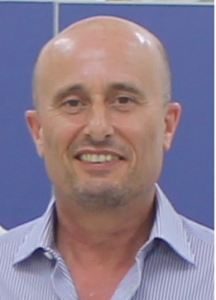 |
Charles V. Sammut Charles Sammut holds a BA in Education from UM (1980), a BSc in Physics with Physical Electronics (First Class Honours) (1987) and a PhD in the field of microwave semiconductor devices (1992) from the University of Bath, UK. He Joined the University of Malta in 1987 and was awarded a Commonwealth Academic Staff Scholarship to read for the PhD degree, for which he was awarded the Deryck Chesterman Medal from Bath University. He is currently full Professor and Head of the Department of Physics, Dean of the Faculty of Science and leads the Electromagnetics Research Group (EMRG). His current research interests include: dielectric spectroscopy of biological tissues for medical applications; computational electromagnetics; antenna design; exposure of workers and the general public to non-ionising electromagnetic fields; biological effects of non-ionising electromagnetic fields. Professor Sammut is a Management Committee Member of COST Actions: IC 1407, CA15124 and CA17115, and has published numerous papers on dielectric properties of biological tissues, in collaboration with his team and other international partners.
|
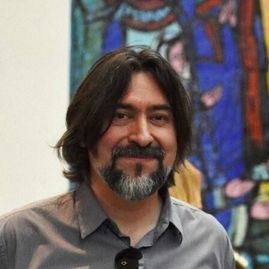 |
Antonio Sarolic
Antonio Šarolić is a Full Professor of Electrical Engineering at FESB, University of Split, where he heads the Chair for Applied Electromagnetics and the EMLab laboratory. His expertise in the field of bioelectromagnetics started with EMF health risks, EMF exposure assessment and specifically EMF measurement instrumentation and methods. In 2012, as a member of a then ongoing COST Action on EMF risks, he proposed to prepare the next COST Action with a paradigm shift to beneficial effects and biomedical applications of EMFs. This proposal was approved in 2014 as COST Action BM1309: European network for innovative uses of EMFs in biomedical applications (EMF-MED), with Antonio Šarolić as Action Chair. Having a broad overview of the field, his current interests and activities in bioelectromagnetics are entirely interdisciplinary, peaking at the topics of interactions, protocols and engineering challenges for neural EMF stimulation and for non-thermal cancer treatment. He is a member of EBEA (currently a member of EBEA Council), BEMS, IEEE and WHO International EMF Project IAC, the Chair of Croatian national standardization committee 106 “Electromagnetic fields in human environment”, and a member of Croatian Academy of Technical Sciences.
|
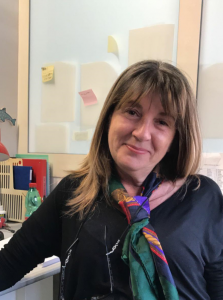 |
Maria Rosaria Scarfì Maria Rosaria Scarfì is Senior Researcher and head of the Bioelectromagnetics Unit at the CNR, Institute for the Electromagnetic Sensing of the Environment (IREA), Naples, Italy.
|
 |
Gregor Sersa Gregor Sersa is head of the Department of Experimental Oncology at the Institute of Oncology Ljubljana, Slovenia. He graduated at the Biotechnical Faculty at University of Ljubljana in 1979, and got his Ph.D. in 1988. His research is devoted to translational oncology, with the focus on electroporation as delivery system for drug and gene delivery to tumors. Specifically, the ways for effective gene delivery with immunomodulatory gene and anti-angiogenic genes is sought. Naked plasmid DNA for specific gene is constructed and antitumor effectiveness tested on tumor models in mice. Also the combination of the specific gene transfer in combination with ablative techniques is explored, like electrochemotherapy or radiation therapy. Promising result are then translated in veterinary oncology as well into human oncology. Gregor Sersa is also professor at the Faculty of Health Sciences at the University of Ljubljana, where he teaches on undergraduate program, at the postgraduate program Biomedicine he has several courses on tumor biology, radiobiology and translational research. He is associate member of Slovenian Academy of Science and Arts, and editor in chief of international journal Radiology and Oncology.
|
 |
Mostafa Shalaby
|
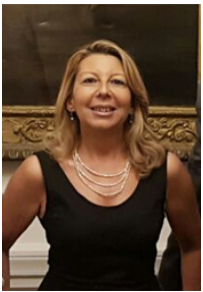 |
Emanuela Signori Emanuela Signori is head of the Laboratory of Molecular Pathology and Experimental Oncology at the National Research Council of Italy (CNR), Department of Biomedical Sciences, Institute of Translational Pharmacology (http://lapmos.ift.cnr.it/). Since AY 2005-2006 she has been appointed as Professor in charge for general pathology teaching at Campus Bio-Medico University of Rome, School of Medicine; tutor, trainer and mentor for Italian and foreigner PostDocs and for PhD and undergraduate students. In 1992 she’s got the MSc Degree, in 2006 the PhD in Experimental Oncology and Molecular Pathology. Her research activity is in the field of oncoimmunology, as coordinator of the CNR project: Anti tumoral pre-clinical protocols of drug delivery by electropermeabilization. She is also interested in expression studies of genes and proteins related to tumour diseases, in order to clarify their role in cancer progression and invasiveness. The research work is carried out in collaboration with International and National Institutions. Dr. Signori is visiting scientist and visiting professor abroad; organizer, member of scientific committees, chair and invited speaker at International conferences; reviewer of National and International research projects; reviewer for indexed IF Journals; ambassador of the European Association for Cancer Research (EACR) and member of International Societies (ISEBTT, EACR, ISE, BES, SIC). She is author of more than 60 publications in books and in peer-reviewed scientific journals.
|
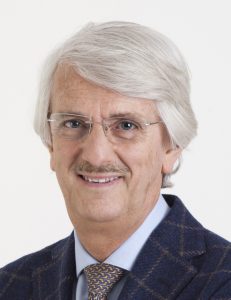 |
Luigi Solbiati Luigi Alessandro Solbiati is Professor of Radiology at Humanitas University (Rozzano – Milan) and Consultant of Interventional Radiology at Humanitas Clinical and Research Hospital. In his academic career, since 1988 he has been appointed as Contract Professor of “Techniques and Methods of Diagnostic Imaging” at the School of Radiology of the University of Milan. Previously, in his clinical activity, he worked at the General Hospital of Busto Arsizio (Milan area) as Chairman of the Department of Oncology and Head of the Division of Interventional Oncologic Radiology. His main fields of interest have always been interventional procedures in oncologic diseases (particularly percutaneous image-guided thermal ablation), imaging of the neck and contrast-enhanced sonography. He was one of the pioneers of ultrasound-guided aspiration biopsies (1979), ethanol injection (1983), radiofrequency ablation with cool-tip electrodes (1995) and microwaves (2009) of solid tumors and fusion imaging for the guidance of interventional procedures (2003). With his team he has one of the largest experiences in the world in the treatment of liver malignancies with radiofrequency ablation (RFA) and, more recently, high-power microwaves, accounting for more than 4,000 patients, with technical success rates above 90% and major complication rates of less than 1%, also thanks to the system of real-time fusion of ultrasound and CT, MRI or, more recently, PET scans. He is currently involved in a very innovative project on the use of augmented reality for the guidance of interventional procedures. He published 153 original articles in peer-reviewed journals as of yet, 123 of them indexed in PubMed. His H-index is currently 54, his impact factor exceeds 450 and his publications had 21,090 citations (Google Scholar). In addition, he published 61 chapters in textbooks of Radiology, Interventional Radiology and Oncology and was Editor and Author of 12 books on small-parts sonography, contrast-enhanced sonography and ablative therapies, 5 of them for international publishing in English. He gave 535 presentations at Meetings, Congresses and Courses in 23 different countries.
|
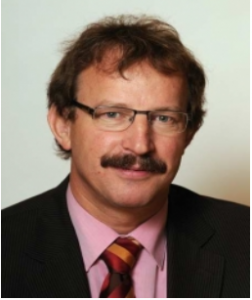 |
Gerard van Rhoon Gerard van Rhoon, physicist, obtained in 1994 his Ph.D. at the Lab. of Electromagnetic Research, Delft University of Technology on the feasibility of regional deep hyperthermia using radiofrequency electromagnetic fields. He is involved in the clinical application of hyperthermia in cancer from the first hour and made pivotal contributions for integrating hyperthermia in regular health care in The Netherlands. His research involves the design of technology to apply well-controlled localized heating of tumors at all sites in the human body. His recent interest is in technology to enable minimally invasive, precise therapy as a one stop-shop intervention using high quality, intelligent and augmented reality imaging guidance. He is a Professor in Physical Aspects of Electromagnetic Fields & Health at the Erasmus MC Cancer Institute. As former member of the Health Council of The Netherlands he chaired Committee 673 on Electromagnetic Fields concerning EMF in society. Currently he has several community responsibilities: member Executive Committee Int. J. of Hyperthermia; auditor for Physics in Medicine and Biology; President of the European Society for Hyperthermic Oncology; Coordinator Academic Center of Excellence of Minimal Invasive Image Guided Therapy of Erasmus MC Cancer Institute. He authored >160 peer-reviewed publications and >120 publications in books, proceedings and non-peer-reviewed journals. He received the first Lund Science Award in 1987, the Dr. BB Singh Award of the Indian Association of Hyperthermic Oncology & Medicine in 2008, the ESHO-BSD award in 2008, the Dr. Sugahara Award in 2012 and the Robinson STM-Award in 2017. |
